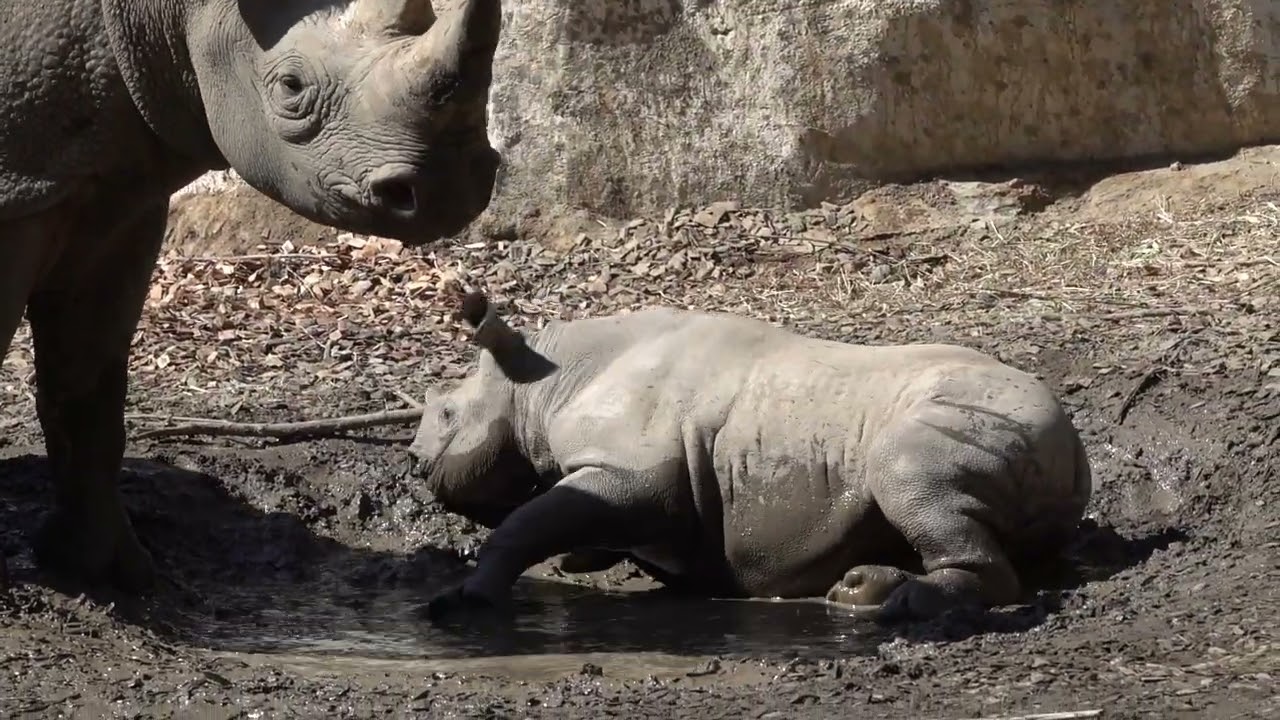– The importance of play in the developmental stages of rhino calves and other large mammals.
– The role of mud baths in the health and wellness of rhino populations in captivity and the wild.
– Insights into current conservation efforts to protect rhinoceros species and their habitats.
– The challenges and strategies in modern zoo management and the contribution of zoos to conservation and education.
– The significance of wildlife documentaries and videos in raising awareness and fostering a connection between humans and animals.
In the fascinating world of wildlife conservation and zoo management, the sight of a vigorous rhino calf playing in the mud captivates the imagination. It highlights vital aspects of animal behavior, health, and conservation. This article delves into the nuanced role of play, the benefits of mud baths, and broader conservation efforts, leveraging the engaging spectacle of a rhino calf in mud to explore these themes.
Play is a critical component in the lives of most young mammals, including rhino calves. Through playful activities, these young animals develop essential skills for survival and social interaction. For a rhino calf, engaging in play, particularly in a natural substance like mud, provides opportunities to practice charging and maneuvering, critical skills for their future. These playful antics are not mere amusements but vital for muscular development, coordination, and cognitive growth. Observing these interactions offers invaluable insights into these magnificent creatures’ natural behaviors and needs, emphasizing the importance of ensuring environments that stimulate natural behaviors in captive settings.
Mud baths play a multifaceted role in the health of rhinoceroses, offering more than just a playground. For rhinos, wallowing in mud is a natural behavior with several benefits, including skin care, temperature regulation, and parasite control. The mud is a protective barrier against the sun’s harsh rays and a repellent to biting insects. For rhinos in the wild and in captivity, access to mud baths contributes significantly to their overall well-being, illustrating the need for habitat features that support natural behaviors in zoo management and wildlife conservation strategies.
Conservation efforts for rhinoceroses are critical in the face of poaching and habitat loss. Protecting these ancient creatures requires a comprehensive approach, from anti-poaching patrols and habitat restoration to captive breeding programs. The playful antics of a rhino calf in the mud underscore the importance of these efforts—each calf represents hope for the future recovery of their species. Conservation programs often rely on the support and awareness generated by wildlife documentaries and videos, making content like a frisky rhino calf an essential tool in conservation education and fundraising.
Modern zoo management has evolved to prioritize not only the conservation of species but also the educational and emotional engagement of visitors. By recreating natural habitats and behaviors, such as providing mud wallows for rhino calves, zoos play a crucial role in conservation education. They offer visitors a glimpse into the lives of animals, fostering a deeper understanding and connection that can inspire conservation action. The management of these institutions faces the challenge of balancing animal welfare, visitor experience, and conservation goals, striving to create environments that benefit both animals and humans.
Wildlife documentaries and videos, such as those showcasing a rhino calf’s mud play, play an indispensable role in bridging the gap between humans and the natural world. They bring the beauty and complexity of wildlife into homes and classrooms, stirring curiosity and empathy. By highlighting the playful side of wildlife, they remind viewers of the intrinsic value of these animals and the critical importance of conservation efforts.
The sight of a vigorous rhino calf playing in the mud is more than a moment of joy and amusement; it represents a confluence of animal behavior, health, conservation, and education. Through this engaging behavior, one can explore the importance of play, the benefits of natural behaviors like mud bathing, and the critical ongoing efforts to conserve rhinoceroses and their habitats. In the broader context of zoo management and wildlife documentaries, this captivating scene serves as a poignant reminder of the interconnectedness of human actions, animal welfare, and the health of our planet. Engaging with and learning from these moments is essential in fostering a harmonious coexistence with the natural world.
*****
Source Description
Tamu is a muddy buddy


